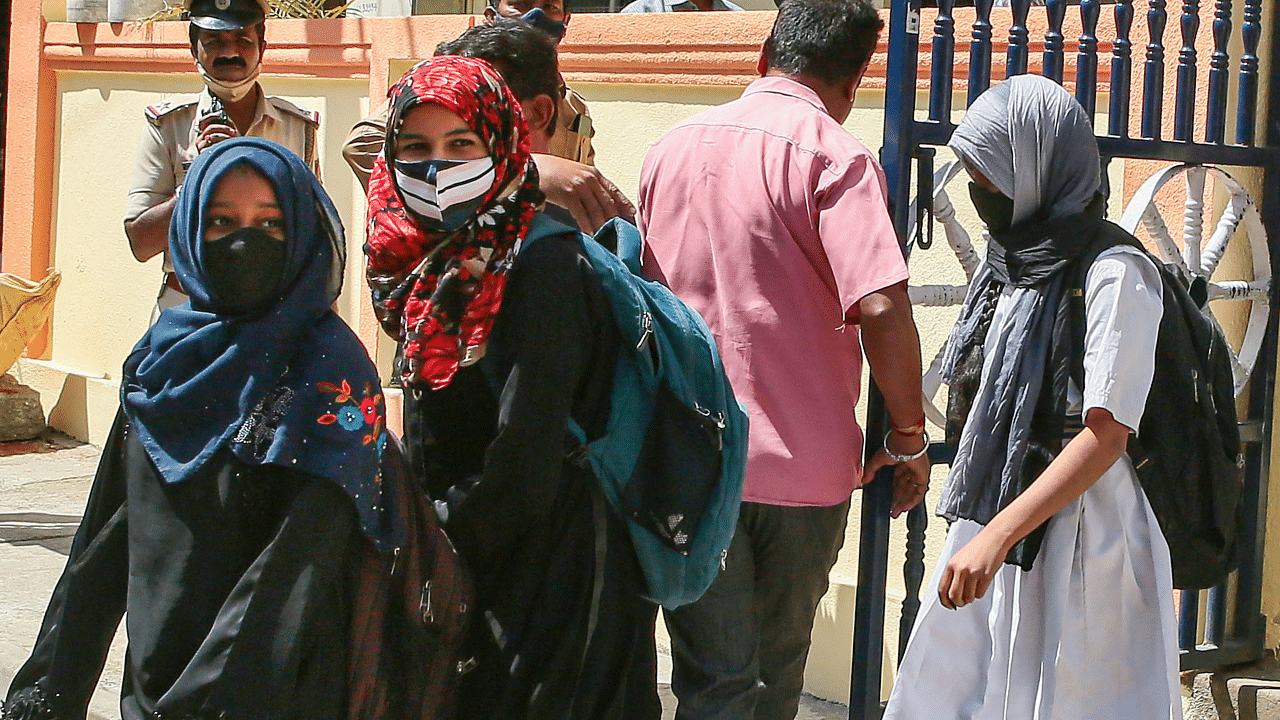
How sacrosanct should a uniform be in an educational institution? Can concessions to wearing it be made sometimes, keeping in mind the circumstances behind requests for such concessions? What impact do these relaxations have on other students? Can these concessions be claimed as rights?
These questions linger after reading the contrasting judgments of the two-judge Supreme Court Bench on Karnataka's hijab ban, imposed in February after the demand by a few Muslim girls to wear hijabs inside classrooms blew up into a communal situation. Neither judgment resolves this complex issue. A uniform cannot be seen as some inviolable rule, nor can a head scarf be reduced to just a matter of choice. Both these premises ignore ground realities as well as the backdrop against which the issue played out.
This is not the first time that requests have been made for concessions to uniforms. Across India, periodically, demands to allow school girls to wear bindis, bangles, flowers in the hair and mehndi have cropped up. Mostly these demands have been made to "convent" (Christian missionary) schools. They might have remained confined to the four walls of the principal's room, but whenever parents have turned to political parties for help, these demands have made news. In Mumbai, the Shiv Sena and the Maharashtra Navnirman Sena have sometimes tried to pressurise schools to give in, with little success.
Invariably, the demands have been made by just a few parents; the majority has rarely joined them. Partly the reason is that convent schools are known for the discipline they enforce among their students, a quality held in esteem by parents. Strict adherence to the uniform is an essential feature of this discipline. Once you allow a few students to breach the rules, can you stop the rest? Or should all students be allowed to wear the respective signs of their faith?
The hijab controversy has seen this latter view gain ground. "Let's celebrate our diversity", goes the argument. As long as the uniform is worn, what can be the harm if some students wear a bindi and flowers while others wear the hijab? Justice Sudhanshu Dhulia asserts that students of junior colleges are at the right age to learn to rejoice in our diversity and realise that in it lies our strength.
But is diversity celebrated only by allowing students to sport external signs of their faith? Shouldn't government schools be religion-neutral? There's a third aspect too. It's mainly girls who wear these religious symbols. Ultimately what do the bindi and the hijab say about the way women are perceived? Why are Hindutvavadis angry that women in advertisements relating to Hindu festivals are shown without bindis? As for the hijab, its very raison d'etre is the protection of women from the male gaze.
Uniforms have enabled female students to discard religious symbols considered mandatory by most families. Isn't that a goal to be cherished by those who want to promote scientific temper and women's equality in a religious and male-dominated society like ours?
But these questions become somewhat academic given the reality that Justice Dhulia mentions - for many Muslim adolescents, the hijab is "the ticket to education". Once we recognise that, a ban on it can only be seen as malafide. Telling these girls to switch to Muslim institutions is no answer, for that would only push them away from the mixed environment in government colleges which allows inter-faith friendships to blossom, breaks the stereotypes communities have about each other and reduces the mistrust between them. Besides, most of these girls cannot afford private colleges.
All this aside, the Karnataka government's malafides stood exposed from the start. It depreciated the way the Campus Front of India jumped into the fray in support of the girls. But on its part, the government allowed Hindu groups to use student mobs not only to dictate the way it handled the issue, but also to bully the Muslim girls. Its education minister openly warned that the rule of "no religious symbols in class" would not apply to bindis and tilaks. The manner in which Muslim students and teachers were forced to take off their hijabs on the road, outside the gates of their institutions, in full view of the media, made us all feel ashamed. One wonders whether the women subjected to this assault on their privacy will be able to forget it.
However, even as we celebrate Justice Dhulia's striking down of the ban, let's not dismiss the liberating quality of a uniform in educational institutions. Let's also ask the question: if the hijab is the ticket to education for many, how can it be a matter of choice?
Disclaimer: The views expressed above are the author’s own. They do not necessarily reflect the views of DH.